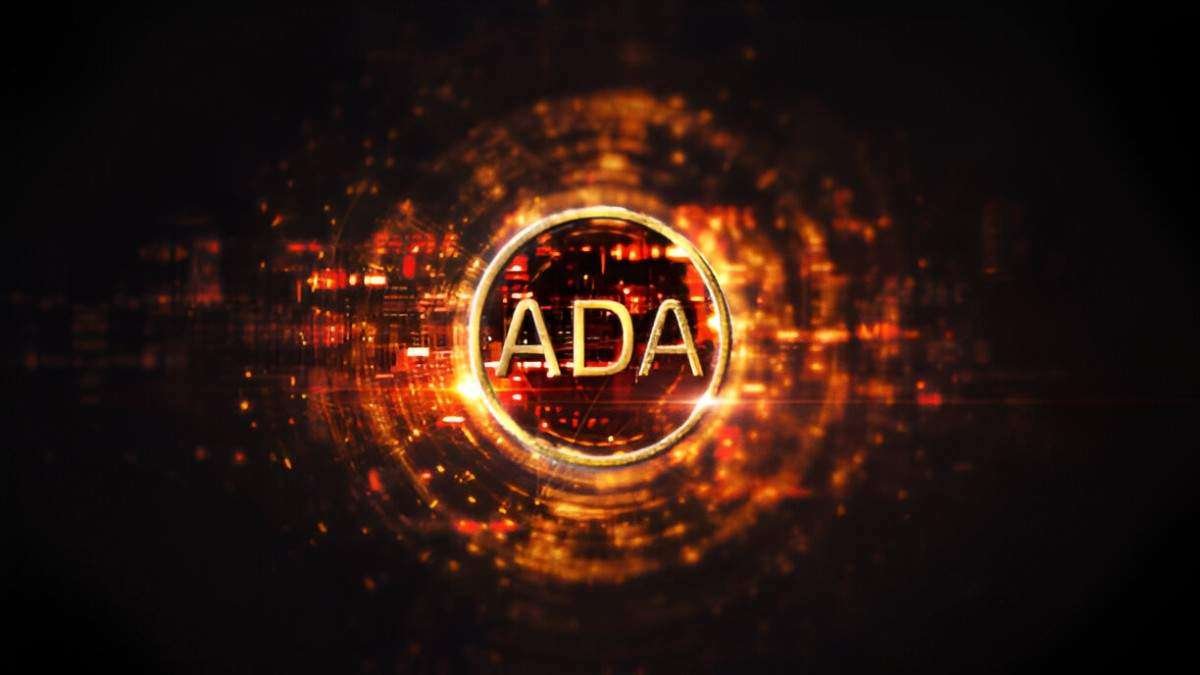In the world of cryptocurrencies, I often hear about new projects that are trying to change the way we think about decentralized networks. One of the most notable ones that caught my attention is ADA, the cryptocurrency of the Cardano blockchain. Cardano, as a project, has grown to become one of the most talked-about blockchain platforms since its inception. But what exactly is the ADA blockchain, and why has it garnered such widespread interest? In this article, I will dive deep into the Cardano blockchain, breaking down its unique features, technical aspects, and potential for the future.
Table of Contents
The Basics of Cardano and ADA Blockchain
To start, it’s essential to understand that the ADA blockchain is a part of the Cardano project, which was co-founded by Charles Hoskinson, one of the original creators of Ethereum. Cardano aims to provide a more secure and scalable infrastructure for decentralized applications (dApps) and smart contracts. What sets Cardano apart from many other blockchains is its focus on peer-reviewed research and evidence-based methods. This is reflected in the way the blockchain was built and continues to evolve.
The native cryptocurrency of the Cardano blockchain is called ADA. ADA is used for transactions, smart contract execution, and securing the network through staking. I’ve come to realize that the ADA blockchain is structured to prioritize sustainability, scalability, and security. These goals are achieved through a layered architecture and a unique consensus mechanism known as Ouroboros.
The Ouroboros Consensus Algorithm
One of the standout features of the ADA blockchain is its consensus algorithm, Ouroboros. Unlike Ethereum, which originally used the energy-intensive Proof of Work (PoW) mechanism, Cardano uses Ouroboros, which is a Proof of Stake (PoS) protocol. In simple terms, PoS is a more energy-efficient and eco-friendly way of validating transactions compared to PoW. Ouroboros, specifically, was designed to achieve high security while minimizing energy consumption.
To explain it better, in a traditional PoW system, miners compete to solve complex mathematical problems, consuming vast amounts of computational power and energy. In a PoS system like Cardano’s, validators (also known as stakers) are chosen based on the amount of ADA they hold and are willing to “stake” in the network. The more ADA staked, the higher the chances of being selected to validate the next block.
Here’s a simple illustration of how the Ouroboros protocol works:
| Step | Process |
|---|---|
| 1 | Validators stake ADA to participate in the network |
| 2 | Ouroboros selects validators to create new blocks based on their stake |
| 3 | Validators verify transactions and create new blocks |
| 4 | Validators receive ADA as rewards for their participation |
This process ensures that the Cardano blockchain remains decentralized and energy-efficient.
Layers of Cardano: The Separation of Concerns
Cardano’s blockchain architecture is built on two layers: the Cardano Settlement Layer (CSL) and the Cardano Computational Layer (CCL). This separation is one of the unique features that distinguishes Cardano from other blockchain networks.
- Cardano Settlement Layer (CSL): This is the layer responsible for handling ADA transactions. It’s the foundational layer where all transactions are processed, and it ensures that the ledger is updated securely and efficiently. The CSL layer ensures that ADA can be transferred between users, much like how Bitcoin functions.
- Cardano Computational Layer (CCL): This layer is where smart contracts and decentralized applications (dApps) are executed. The CCL is built to be highly adaptable and allows developers to write smart contracts in multiple languages. This flexibility is one of the reasons why Cardano has attracted a growing community of developers.
The separation of concerns between these two layers enhances scalability and security, as each layer can be upgraded independently without affecting the other. I find this architecture particularly compelling, as it offers a level of flexibility that many other blockchains lack.
Smart Contracts on Cardano: Plutus and Marlowe
When it comes to smart contracts, Cardano takes a different approach compared to other blockchains like Ethereum. Cardano offers two programming languages for developing smart contracts: Plutus and Marlowe.
- Plutus: This is the smart contract development language for Cardano. Plutus is based on Haskell, a functional programming language known for its robustness and safety features. Plutus allows developers to write highly secure and efficient smart contracts. However, since Haskell is not as widely used as other programming languages, the learning curve for Plutus can be steep for new developers.
- Marlowe: On the other hand, Marlowe is a domain-specific language designed to make smart contract development accessible to a broader audience. Marlowe focuses on financial contracts and allows users to write smart contracts without needing deep programming knowledge. This makes it easier for people in the finance sector to develop and deploy blockchain-based solutions.
I believe these two languages offer a diverse range of possibilities for developers and businesses looking to build on the Cardano blockchain. While Plutus provides advanced features for experienced developers, Marlowe offers simplicity and accessibility for those who want to quickly create financial contracts without needing extensive coding experience.
Staking ADA: A Rewarding Process
One of the main attractions of the ADA blockchain is the opportunity for users to earn rewards through staking. By staking ADA, holders can participate in securing the network and, in return, earn ADA as rewards. This process not only incentivizes individuals to hold their ADA but also helps maintain the security and decentralization of the network.
Let’s break down how staking works and how much potential you could earn from it:
- Staking Pools: Users can join staking pools to combine their ADA with others, increasing their chances of being selected as validators in the Ouroboros consensus protocol. Pool participants share the rewards based on the amount of ADA they’ve staked.
- Delegated Staking: If you don’t want to run a staking pool yourself, you can delegate your ADA to a pool. By doing so, you’re entrusting the pool operator to handle the technical aspects while still earning rewards proportional to your stake.
To get a better sense of how staking rewards work, here’s an example:
| Amount Staked (ADA) | Pool Staking Reward (%) | Annual Reward (ADA) |
|---|---|---|
| 1,000 | 5% | 50 |
| 10,000 | 5% | 500 |
| 100,000 | 5% | 5,000 |
In this example, if you stake 10,000 ADA in a pool that offers a 5% annual reward, you could earn 500 ADA per year. The more ADA you stake, the greater your potential rewards.
Staking ADA offers an attractive incentive for long-term holders, especially when combined with Cardano’s emphasis on security and scalability. It’s a way to earn passive income while contributing to the network’s stability.
Cardano’s Ecosystem: Growth and Development
Cardano’s ecosystem is growing rapidly, with more decentralized applications (dApps) being built on its platform. The Cardano Foundation, along with other partners, has been working hard to foster a vibrant and sustainable ecosystem for developers and users.
One of the key areas where I see Cardano making strides is in the area of DeFi (Decentralized Finance). With the launch of smart contract capabilities on Cardano, more DeFi projects are beginning to emerge. Projects like SundaeSwap and Minswap are early examples of decentralized exchanges (DEXs) that have launched on Cardano.
What excites me most about the Cardano ecosystem is its focus on bringing blockchain technology to underserved regions, particularly in Africa. Cardano’s partnerships with governments and businesses in Africa aim to use blockchain for things like supply chain management, education, and financial inclusion. I believe this could lead to widespread adoption of Cardano in emerging markets.
Comparison with Other Blockchains
To truly understand Cardano’s place in the broader blockchain landscape, it’s helpful to compare it with other popular blockchain networks. Below is a comparison of Cardano with Ethereum, another well-known blockchain platform:
| Feature | Cardano | Ethereum |
|---|---|---|
| Consensus Mechanism | Ouroboros (Proof of Stake) | Proof of Work (Ethereum 1.0), Proof of Stake (Ethereum 2.0) |
| Smart Contract Languages | Plutus, Marlowe | Solidity |
| Transaction Speed | 250+ transactions per second (TPS) | 30 transactions per second (TPS) |
| Energy Efficiency | Highly energy-efficient (PoS) | Less energy-efficient (PoW) |
| Developer Community | Growing, with emphasis on security and scalability | Large, with extensive resources and tools |
From this comparison, it’s clear that Cardano offers significant advantages in terms of energy efficiency and scalability, especially with its use of the Ouroboros consensus mechanism. However, Ethereum has a larger developer community and is more established, which could give it an edge in terms of overall adoption and dApp development.
The Future of Cardano: What’s Next?
Looking ahead, I see a bright future for the ADA blockchain. Cardano’s ongoing focus on research, development, and sustainability positions it as a strong competitor in the blockchain space. As more developers build on the platform and more users adopt Cardano for staking and transactions, the ecosystem will continue to grow.
Moreover, with Ethereum’s transition to Proof of Stake and the rise of new competitors like Solana and Polkadot, Cardano’s emphasis on scalability and security makes it a viable option for businesses and developers looking for a blockchain that can handle high transaction volumes while remaining environmentally conscious.
The path ahead will require Cardano to continue enhancing its ecosystem, attracting more dApps, and ensuring that its staking system remains secure and rewarding for users. If it can accomplish these goals, Cardano could very well become one of the most influential blockchain platforms in the years to come.
Conclusion
In summary, the ADA blockchain offers a robust, scalable, and energy-efficient platform that aims to provide solutions to some of the biggest challenges facing blockchain technology today. Through its unique Ouroboros consensus algorithm, layered architecture, and focus on research-driven development, Cardano has positioned itself as a promising project in the decentralized space. Whether you’re a developer, investor, or simply someone interested in the future of blockchain, ADA is certainly a project worth paying attention to. As I’ve explored throughout this article, the ADA blockchain has the potential to reshape industries and bring about greater financial inclusion and security in the digital world.





